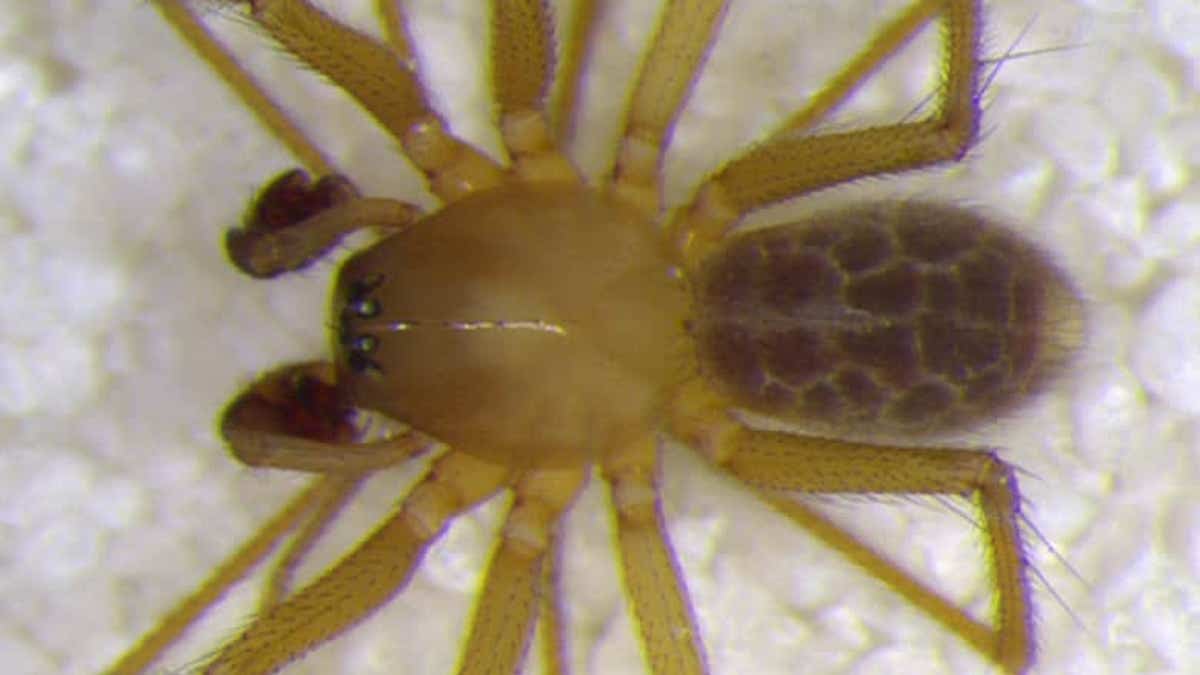
Indiana arachnologist Marc Milne discovered a new type of sheet weaver spiders inside a cave in southern Indiana. (Marc Milne/Subterranean Biology)
A tiny species of spider lived deep inside a cave in Indiana — and scientists had no clue it existed until recently.
Marc Milne, an arachnologist at the University of Indianapolis, discovered the new type of sheet weaver spiders inside the damp and rocky Stygian River Cave with guidance from one of his colleagues.
“In the morning when there’s dew on the grass, and you see the little horizontal webs — those are sheet webs,” Milne told Gizmodo.
The spiders, which Milne named "Islandiana lewisi" after Julian Lewis, who he credited with leading him to the location, are only about two milimeters long. Their bodies are slightly translucent —"dusky yellow to tan" — and they have black circles surrounding their eyes. This particular type of arachnid is known for their flat, tightly-woven, horizontal webs.
"This is the fifteenth species in its genus (Islandiana) and the fifth known to live exclusively in caves. It has been over 30 years since the last species has been added to this group," Phys.org reports.
Milne described the crawlers in a new study published in "Subterranean Biology."
"These specimens were largely found in webs in between the large boulders within the largest room of the cave," Milne explained in the journal, adding that the specimens were collected in October 2016.
The find is important, Milne points out, because it proves unknown species could be dwelling anywhere.
“When people think of new spiders being discovered, they think of the Amazon or the ice underneath Antarctica,” he told Gizmodo. “But even in our backyard, there are a lot of new, undiscovered organisms that we don’t know much about. People think we know everything about the organisms in the Midwest and the United States because we’ve scoured the land, but in reality, we haven’t. A lot of groups are really understudied. Spiders are just one of them.”
